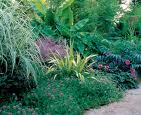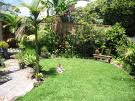Most of us have not realized the benefits, in which plants can bring to urban life. Plants improve the quality and refresh the air we breathe, considering the gas emitting vehicles and other sources of pollution in which urban life is exposed to.
Plants energize life and beautify a dull surroundings, they provide the shade to help cool the atmosphere and protect us from sun’s harmful ultraviolet rays.
A watershed of plants helps increase the underground water table level which can be an excellent source of our water daily requirement.
A closely knit root system of most plants, enable them to hold water and consolidate loose soil particles in place, thus preventing soil erosion.
Plants also serve as sanctuaries to insects, bees, butterflies, birds, reptiles and other creatures thus preserving the ecological balance within such an environmental system.
Notwithstanding, of the other benefits we can derive from, in the form of herbal medicines, food, wood, flavorings, dyes, spices, etc.
Plants can be grown indoor or outdoor. Sturdy or hard bodied plants are usually grown outdoors, but soft-leafed and soft bodied plants prefer more shade or they get burned from direct sunlight.
They can be grown indoor with artificial lighting. Most flowering, fruit bearing plants and vegetables love full sun.
Plants’ water requirements vary, succulent plants are those can store in their body parts like bulb plants, cacti, and sturdy plants like bougainvillea, palms, and others , they can survive with little watering.
Moreover , there are plants that need more water provided the soil is not too wet or does not get soggy.
A good example are soft bodied plants, ferns, African violets and others. Fertilizer application also varies, flowering and fruit bearing plants need more plant food compared to foliage plants.
Organic fertilizer such as dried animal manure, fish emulsion, or by products of compost pit are better and safer to use than chemicals.
Plant propagation is something we need to educate ourselves. Fruit bearing and vegetable plants are mostly planted from seeds borne in matured pods or fruits. Palms are produced from fertilizing seeds or divisions.
Woody plants like bougainvillea, santan, and others are propagated by stem or branch cutting . Some plants do not produce seeds, may not respond to stem or branch cutting, in these cases marcotting is applied.
Marcotting is usually done by stripping off a portion of plant’s bark thin layer about 4″ or 6″ in length, applied with rooting powder or soil to induce rooting and the wound is fully covered with sphagnum moss or coconut fibrous husk and wrapped it with tape or anything that holds and bind the full covering together.
After several weeks , the roots is already expected to show up this time, in which case the marcotted material is now ready for planting.
Improving ones urban life is not that difficult to achieve if everyone appreciates the benefits, these plants can bring in maintaining the ecological balance within the urban community and environment in general.

